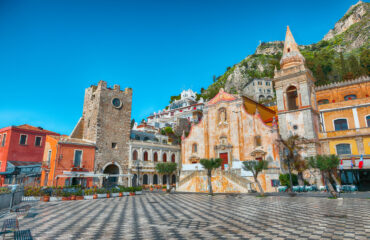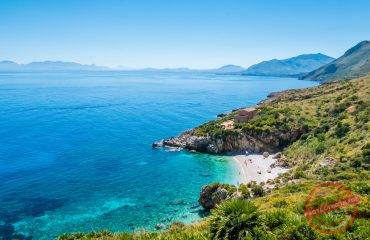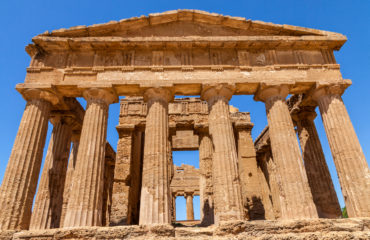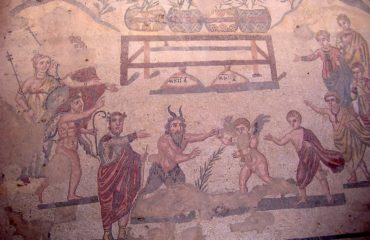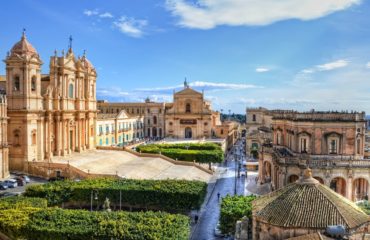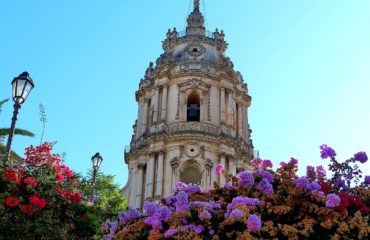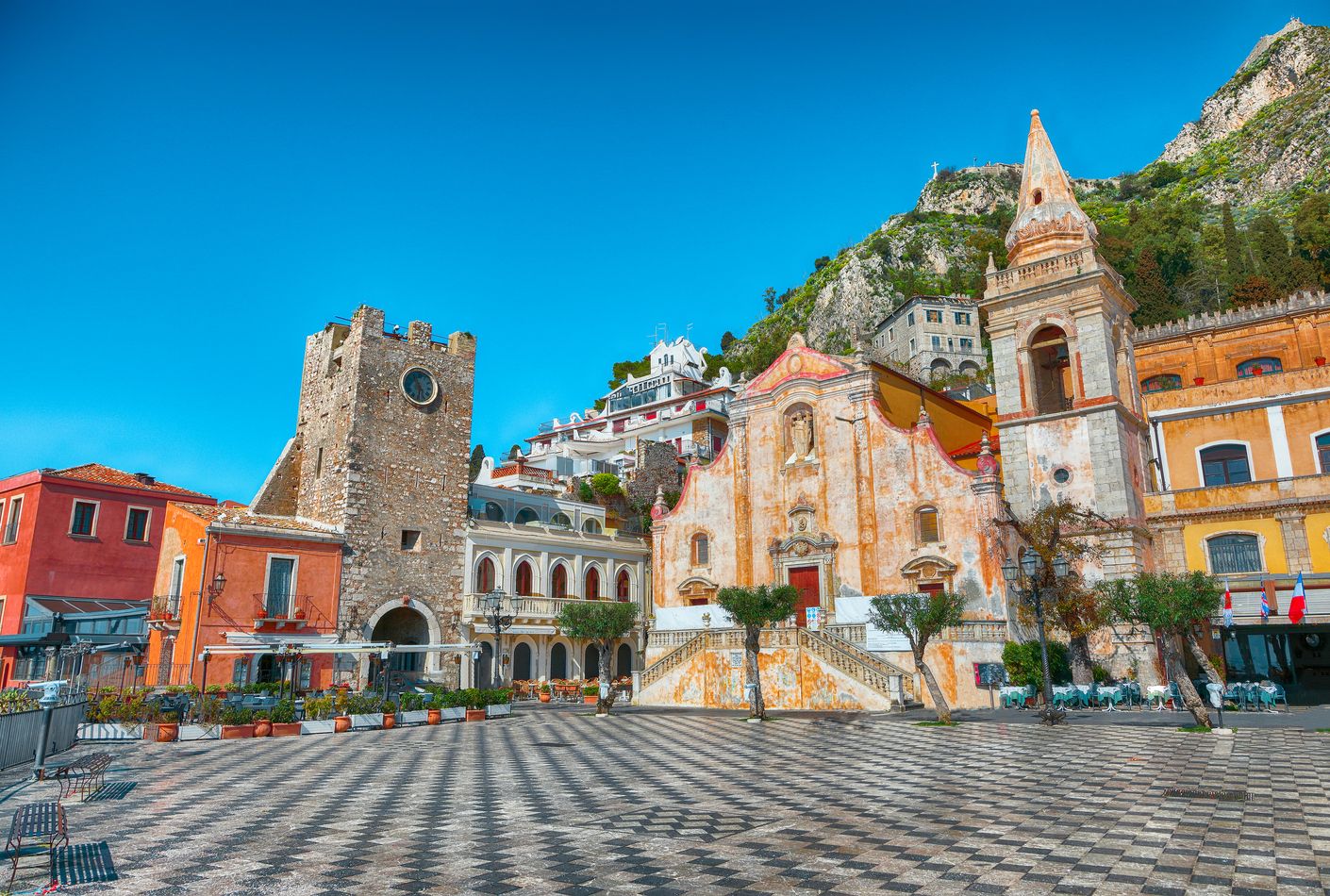
BLISSFULLY SICILY
Palermo, Agrigento, Noto & Taormina
Starting from €18.000 (for two guests)
- Discover how the fruitful coexistance of Western, Byzantine and Islamic cultures has made Palermo unique
- Roam through the fascinating ruins of Akragas, described by the poet Pindar as “the most beautiful among the cities of mortals”
- Tuck into a delicious Sicilian meal accompanied with “explosive” Etna wines at an estate located at the foot of Europe’s tallest active volcano
-
Duration11 days / 10 nights
-
Category
-
Day 1
Arrive in Palermo
Upon arrival at the airport, meet your private driver and reach your hotel in Palermo where you will be staying for 3 nights.
Following check in, which will take place after 2:00 or 3:00 PM, spend the rest of the day at leisure.
-
Day 2
Highlights of Palermo & the Cathedral of Monreale
Palermo sits seductively on a north-westerly tip of Sicily, bounded by the cobalt-blue waters of the Mediterranean Sea. Oscar Wilde fell under its spell, declaring it “lovely. The most beautifully situated town in the world. It dreams away its life in the Conca d’Oro, the exquisite valley that lies between two seas.”
Founded by the Phoenicians as far back as the 7th century BC and appropriately named Ziz, meaning flower, the city blooms with artistic marvels at every corner, delighting visitors with a rich bouquet of Byzantine mosaics, Moorish-style decorations, Baroque frescoes and Neoclassical palazzi. For millennia at the crossroads of civilizations, due to its strategic location at the heart of the Mediterranean, Palermo boasts an unparalleled historical legacy, reflecting traces left by a numerous succession of invaders, all eager to leave their indelible mark on the city. A heady, flamboyant mix of architectural styles attests to the coexistence of different traditions, customs and beliefs and lives on as an outstanding example of a fruitful syncretism between Western, Byzantine and Islamic cultures. The souk-like atmosphere of Palermo’s noisy markets rubs shoulders with the peaceful aura of hidden, hallowed cloisters, tropical date palms thrive alongside the sacred walls of Norman churches, interlocking Arabic motifs frame the glittering tesserae of Christian imagery. While you weave your way into the intricately knotted fabric of Palermo your guide will illustrate the history of the city and explain how a multicultural, cosmopolitan environment led it to flourish and become the full glory we witness today.
A visit to Palermo’s historic street market, dating back to the Moorish domination, will allow you to feel the pulse of daily life in Sicily. Amble through the bazaar enjoying the sensations of the scene: hear the raucous cries of hawkers calling out in dialect to encourage passing trade; admire stalls brimming with a tempting assortment of produce that will make your mouth water; feast your eyes on crisp green vegetables, juicy citrus fruits, the freshest of fish; watch bargainers as they haggle for the best deal. From here it only takes a tiny step of the imagination to picture the sights and scents of exotic wares and oriental spices that Arab merchants would have traded on this very spot 1,000 years ago.
You will then venture along Palermo’s lively streets, cross the Baroque square of Quattro Canti, and reach Santa Maria dell’Ammiraglio. This church is renowned for its splendid interior, graced by 12th century Byzantine mosaics. Gaze up to receive a blessing from Christ Pantocrator gloriously seated on a throne at the centre of the gleaming cupola, surrounded by archangels and saints.
A short walk will bring you to the grandiose cathedral dedicated to the Assumption of the Virgin Mary, one of Palermo’s most extraordinary monuments. Built on the site of a 9th century mosque, in turn erected over an earlier Byzantine basilica, the church is a true textbook of architectural history spanning hundreds of years. Norman towers, Arabic patterns, Gothic arches and crenellations, Baroque statues and 20th century bronze panels characterize the unforgettably beautiful exterior. Inside, heavily reworked 18th century naves host the tombs of the great and good, including kings and emperors as well as the earthly remains of the city’s patron saint Rosalia.
Crown your morning with a visit to the city’s most prized jewel, the sparkling Palatine Chapel, tucked away inside the Palace of the Normans, former seat of the Kings of Sicily. Built at the request of King Roger II between 1130 and 1144, the chapel reflects the rich cultural fervour experienced during the Norman rule over Sicily and superlative artistic heights reached by yesteryear’s craftsmen. The layout and decor of the interior, with its Western three-nave design, slender Corinthian columns, glimmering golden mosaics and elaborately carved Arabic-style wooden ceiling is a brilliant blend of Latin, Byzantine and Islamic traditions.
After some free time for lunch your chauffeur will pick you up and drive you to Monreale, 8 kilometres southwest of Palermo. Completed in 1267, the Arab-Norman cathedral is yet another striking example of the fabulous fusion of different architectural styles and artistic visions achieved in Sicily in the Middle Ages. An astonishing 6,500 square metres of tesserae, depicting biblical tales from the Creation of Man to the Ascension together with archangels, saints, prophets and intricate decorative patterns, cover the walls of the central nave and aisles, culminating with the glorious apse representation of Christ Pantocrator. Don’t forget to take a peek inside the adjoining cloister for a glimpse of Eden: a peaceful garden of palm trees and shrubs surrounded by an Arabic-style arcade.
After the visit your private chauffeur will drive you back to your accommodation in Palermo.
-
Day 3
Hiking & swimming in Lo Zingaro Nature Reserve
To the west of Palermo, couched between the towns of Scopello and San Vito Lo Capo, lies a truly spectacular stretch of Sicily’s coastline. Over the centuries the most talented of sculptors, the wind and waves, have jointly chiselled a veritable masterpiece of design and colour out of the solid limestone rocks. Rugged silvery cliffs drop into the azure waters, tenebrous caves crouch silently among the vivid green Mediterranean scrub, white pebbled beaches gleam in the dazzling light of the Sicilian sun.
First established as a nature reserve in 1981, Lo Zingaro is one of the island’s most sought-after travel destinations. A paradise for hikers and bathers alike, this protected area also attracts nature lovers, botanists and ornithologists with its unique flora and fauna. A favourable terrain and a humid microclimate allow around 650 species of plants and wild flowers to thrive. These include laurel, thyme, broom, Erica, orchids and the treasured dwarf palm, the symbol of Lo Zingaro itself. Peregrine falcons, kestrels, buzzards and eagles are among the thirty-nine different bird species that nest in the reserve. The area has also turned out to be a priceless source of knowledge for archaeologists, as attested by the 10,000-year-old human bones and artefacts unearthed inside the Uzzo Grotto, one of the first prehistoric settlements in Sicily. These findings are now kept in the Museo Archeologico Regionale Antonio Salinas in Palermo.
After breakfast you will meet your private guide and driver at your accommodation in Palermo and set off for Scopello. From here follow the coastal footpath and enjoy hiking across seven kilometres of unspoiled nature. Your guide will animate your walk with a fascinating account of the history of Lo Zingaro. For centuries the area was inhabited by small communities of farmers and served as an ideal hideout for smugglers and bandits who used the grottoes as storage space for their loot. Five tiny museums scattered along your trail will provide information about rural and fishing activities once carried out locally as well as the natural specimens that blossom here.
As you make your way along the path, you will find it hard to resist a dip in one of the paradisiacal bays. Soak up the views of the Sicilian seascape and relax to the sounds of the lapping tide as you bathe in the jewel-toned waters of the Tyrrhenian Sea.
After the hike your chauffeur will pick you up and drive you back to your accommodation in Palermo.
-
Day 4
Private transfer from Palermo to Agrigento with a guided tour of Selinunte en route
After breakfast and check out meet your private driver outside your accommodation, sit back and relax on the ride to Agrigento. En route, stop to enjoy a guided tour of the largest archaeological site in Europe.
Immersed in a tranquil setting on a high plain overlooking the cobalt-blue Mediterranean Sea and the golden sandy beaches of the western coast of Sicily, the ruins of the one-time bustling city of Selinunte are a truly moving and impressive sight. Historians believe the settlement was founded by Greek colonists some time between 650 and 630 BC. Selinunte’s population, commercial power and financial prosperity grew rapidly, leading it to become one of Sicily’s most affluent and influential cities. The abundance of olive oil and wheat triggered a profitable agricultural exporting activity; its thriving port drew ships and wares from all over the Mediterranean giving impulse to trade and to the mass production of ceramic artefacts; grandiose temples in honour of the classical deities began to be erected as an expression of gratitude for such good fortune. The city’s ambitions and expansionist designs sparked the envy of nearby populations and especially of the Elymians from the rival town of Segesta, whose enmity would eventually be fatal.
The ruins you see today have lain abandoned for almost 2,500 years, ever since a devastating 409 BC raid transformed Selinunte into a gigantic heap of rubble. The North African Carthaginians, who considered the city’s feats a threat to their dominance over Sicily, taking advantage of some minor border skirmishes between Selinunte and the Elymians, sent a 40,000 strong army against Selinunte on the pretext of defending the interests of their ally Segesta. After a nine-day siege the Carthaginians breached the walls of Selinunte, destroyed and plundered private homes and temples, slaughtered some 16,000 of the estimated 25,000 civilians and enslaved 6,000 men, women and children. This brutal massacre marked the end of Selinunte’s glories and, although the city was partially rebuilt and repopulated, it never again regained its former magnificence. A second, definitive attack was inflicted on the city by the Carthaginian troops during the first Punic War in 250 BC.
Despite ferocious pillage and plunder, a violent earthquake that shook the area in the Middle Ages and the inevitable assaults of time, a remarkable portion of Selinunte has miraculously survived, frozen for almost two and a half millennia. As you walk past the ruins of temples, residential quarters and workshops your guide will explain how this archaeological site continues to provide us with valuable knowledge about the customs, traditions and beliefs of a bygone civilization. What is striking about Selinunte is that its age-old metropolis is still preserved in its entirety, mostly hidden under layers of sand and earth, thus offering an exciting opportunity to unravel some enigmas surrounding the ancient Greeks. From one day to the next vibrant Selinunte became a ghost town and simply ceased to exist. Indeed one of the most appalling tragedies of the classical world may well prove to be a source of priceless information, enabling us to throw light on the mysteries of our ancestors’ way of life.
After the tour and some free time for lunch rejoin your driver and head for your accommodation in Agrigento where you will be staying for 2 nights. Following check in spend the rest of the day at leisure.
-
Day 5
The Valley of the Temples
Turn back the wheels of time and relive the extraordinary feats of Sicily’s early inhabitants on a private tour of one of the island’s most enthralling archaeological sites.
The impressive remains of Akragas still stand at the summit of a rocky plateau in Agrigento, remarkable evidence of a once thriving, innovative Mediterranean civilization. You will discover the history of this age-old settlement, from its founding by Greek colonists as far back as 580 BC, to its rise and expansion under the reigns of tyrants Phalaris and Theron. It was then that Akragas became a formidable martial power and grandiose monuments were erected within its mighty twelve-kilometre-long walls. A population of about 200,000 lived in the city, a considerable number for those times. A period of decline and rivalry between Akragas and Syracuse culminated in the 406 BC Carthaginian siege and the subsequent destruction of the city by Hannibal and his troops. Despite successive reconstructions, struggles and lootings that occurred down the centuries as Akragas was taken over by the Romans, Byzantines, Moors and Normans, traces of the city’s glorious Greek heyday miraculously live on to this day and continue to offer a fascinating glimpse into a bygone era and culture.
Your guide will lead you through the ruins and illuminate the past with tales and curiosities of the city’s ancient residents, from ambitious rulers to faithful worshippers. The excavations, declared a UNESCO World Heritage Site in 1997, stretch over 1,300 hectares in a splendid setting, amidst almond groves and centuries-old olive trees. Surviving archaeological treasures include the gymnasium, where athletic, educational and recreational activities once took place; pagan and Palaeochristian necropolises; ruins of workshops, taverns and patrician villas.
The highlights of the site are the majestic Doric temples, originally built between 510 BC and 430 BC to celebrate the city’s military victories and financial prosperity. The Temple of Hera, perched atop a hill affording sweeping views of the countryside and dark blue Mediterranean Sea beyond, was once the ancient city’s voguish venue for weddings while the Temple of Asclepius, dedicated to the god of medicine, at one time attracted pilgrims in search of miracle cures. Not to be missed are the perfectly proportioned and astoundingly well preserved Temple of Concord, the eight surviving pillars belonging to the oldest shrine of Akragas, dedicated to Heracles, and the gigantic ruins of the Temple of Zeus, which would have been the largest Doric temple ever built had its construction not been interrupted by the Carthaginian invaders. The iconic Temple of Castor and Pollux, whose four columns have become the symbol of the city of Agrigento, is also among the poignant sights of this tour.
Although 2,500 years have gone by since Akragas reached the height of its opulence and magnificence, as you roam through the ruins you might well understand what prompted the ancient Greek poet Pindar to call this place “the most beautiful among the cities of mortals”.
-
Day 6
Private transfer from Agrigento to Noto with stops in Piazza Armerina & Caltagirone en route
After breakfast meet your private driver at your accommodation and relax on the ride to Noto. En route enjoy a private tour in Piazza Armerina and some free time in Caltagirone.
Situated inland, on the southern slopes of the Erean mountains, Piazza Armerina is home to one of the island’s most extraordinary archaeological sites. Your private guide will be waiting for you at the excavations, ready to lead you back in time, on a tour of the ruins of a 4th century AD Roman mansion.
Due to its immense historic and artistic value, the ancient Villa del Casale has occupied its rightful place among Sicily’s World Heritage Sites since 1997. The building’s complex architectural layout and decoration provide a splendid example of what a luxury country house must have looked like in the late Imperial era. A monumental three-arched entrance led to a large courtyard which opened on to more than forty rooms, including private chambers, servants’ quarters, reception areas, a dining room and thermal baths, originally richly adorned with a triumphant display of fountains, statues, wall paintings and mosaics. Although the identity of its owner remains a mystery, historians believe the villa could well have belonged to an illustrious Roman patrician, probably a member of the Caput Mundi’s senatorial class, a governor or an imperial official, who idled the summers away in this palatial hunting lodge, feasting upon the beauties of the Sicilian landscape and bathing in his pool.
The most striking feature of the villa is the collection of amazingly well preserved polychrome mosaics extending over 3,500 square metres of floors. Following a landslide that occurred in the Middle Ages, these tesserae were covered beneath a deep layer of mud and sand that fortuitously protected them from the damaging effects of wind and rain for some seven hundred years, until their discovery in the 1950s. Assembled with painstaking accuracy into a variety of geometrical motifs, interweaving patterns and figurative themes, the mosaics of the Villa Romana del Casale attest to the skill and refinement of specialised craftsmen in the Late Antiquity and are a precious source of knowledge, both for their artistry and sociological significance. Representations of mythological episodes and scenes from the Roman aristocracy’s daily life offer a captivating glimpse into the habits and beliefs of yesteryear’s elite. Among the unforgettable compositions are the Hunting Scene, representing Roman warriors as they capture wild animals, and the exquisite Girls in bikinis, depicting young women clad in two-piece swimsuits exercising with a ball, disc and dumbbells.
After the tour and free time for lunch, rejoin your driver and set off for Sicily’s pottery capital to enjoy some independent sightseeing. Once a bustling medieval hub for trade and crafts, Caltagirone thrived under the Norman rule and enjoyed continuous properity until the fateful year of 1693 when a violent earthquake halted its development, turning the city into a heap of rubble. Survivors, however, demonstrated their resilience – an old Sicilian saying goes, Scàcciti juncu ca passa la china (literally meaning “Reed, bend because the flood is going to pass”) – and immediately set to work on the reconstruction of Caltagirone. In only ten years the city rose from its ashes and was gorgeously rebuilt with the frills and flair of the Baroque era, as attested by the fine 18th century churches and palazzi that can still be admired today.
More than eighty ceramic workshops keep alive a centuries-old tradition, scattering splashes of bright cobalt-blues, warm ochre yellows and mossy greens into the town’s alleys and squares. An abundance of clay deposits triggered the dawn of a flourishing production of terracotta ware as early as the 2nd century BC but it is to the Moors, who first introduced glazing techniques and sophisticated designs, that Caltagirone owes its fortunes and reputation as a centre of excellence in the field of ceramics. The city’s showpiece is undoubtedly the Staircase of Santa Maria del Monte, connecting lower Caltagirone with the older upper town, consisting of 142 stone steps adorned with hand-painted majolica tiles featuring intricate floral and geometrical patterns.
Enjoy a leisurely stroll through Caltagirone’s vibrant streets then rejoin your driver and set off for Noto where you will be staying for 2 nights. After check in spend the rest of the day at leisure.
-
Day 7
Guided tour of Noto, lunch at a herb farm & visit to Modica
After breakfast discover the wonders of Noto on a private guided tour. Razed to the ground by the devastating earthquake that struck southern Sicily in 1693, the town was completely rebuilt. Sumptuous and swanky, Noto is a superb incarnation of Baroque planning and building principles and stands as an enduring reminder of man’s boundless inventiveness, prolific fantasy and heroic resilience in the face of the overwhelming forces of nature. Divided by parallel roads, oriented from the east to the west so as always to be irradiated by the sun’s rays, Noto’s historic centre is almost entirely built in limestone, a material that seemingly absorbs the golden beams reflecting a soft honey-hued glow.
We owe the city’s present appearance to the artistic inspiration of three visionary architects, Rosario Gagliardi, Vincenzo Sinatra and Paolo Labisi, who were entrusted with the task of designing a city that would mirror the Baroque ideals of astonishment and virtuosity. The result is a true urban masterpiece replete with eye-popping details: finely carved floral motifs embellish the facades of noble residences, masks peer down from corbels, chubby cherubs frolic along church walls, winged horses flutter beneath wrought iron balconies, fierce lions guard historic stone buildings. A Baroque safari is in full swing! Your guide will lead you on an unforgettable expedition through Noto’s sculpted jungle and make sure you do not miss its highlights: the Cathedral of San Nicolò, sitting proudly atop a monumental flight of steps, the Church of Santa Chiara with its elaborate stuccos and the richly ornamented balconies of Palazzo Nicolaci, an unequalled triumph of Baroque art in Noto.
After a leisurely stroll through town a 50-minute drive will bring you to a herb farm. Here, in this splendid natural setting, guests will relish Sicily’s authentic aromas while taking in views that stretch all the way to the cobalt-blue Mediterranean Sea. The estate has been successfully run for twenty years by a dedicated, hard-working family, driven by the ambition to keep alive the island’s traditional fragrances and flavours. Over two hundred different varieties of medicinal, ornamental and culinary plants, including capers, sage, thyme, lavender, mint, santolina, helichrysum and rosemary, are lovingly and carefully cultivated in the garden and, as the owners set themselves new challenges, these will soon be joined by tropical plants and endemic Sicilian herbs which are today threatened with extinction.
A member of the family will greet you and lead you on an entertaining and informative visit to the estate’s greenhouse and scented pathways. Later, under a passion flower pergola, feast your senses on a delicious lunch made with fresh ingredients, seasoned with the farm’s aromatic spices and washed down with a glass of wine.
The last stop on your tour will bring you to Modica. Severely damaged by the 17th century seism, Modica too was superbly rebuilt in Sicilian Baroque tradition. Magnificent churches and finely decorated buildings will strike you as you make your way along winding alleys, up and down stairways, through the two neighbourhoods of Upper and Lower Modica. The Conti Castle surveys the town from the summit of a rocky outcrop but the centrepiece is undoubtedly the Cathedral of St. George standing proudly at the top of a steep flight of steps, with its graceful facade rising into a curved bell tower. Also worthy of a visit are the Church of St. Mary of Bethlehem, housing the Late Gothic Cabrera chapel, a miraculous survivor of the earthquake, and the Cathedral of St. Peter, dominating the main street of Corso Umberto, with the statues of the twelve apostles greeting onlookers from the ramp.
Despite these architectural landmarks Modica’s most extraordinary feat may well be its much praised gastronomic achievements. The town jealously safeguards a four-hundred-year-old tradition of chocolate making, attracting gourmands from far and wide. As part of the Spanish kingdom, Sicily was one of the first lucky recipients of the new exotic spices brought back from South America, including cocoa. Modica still specialises in the creation of rich, dark, crumbly chocolate flavoured with cinnamon and vanilla, inspired by ancient recipes retrieved from the Aztecs. Before returning to Noto don’t forget to pay a visit to the Antica Dolceria Bonajuto, a confectionery shop that has been delighting the palates of Sicilians with its chocolate temptations since 1880.
-
Day 8
Private transfer from Noto to Taormina with a guided tour of Syracuse en route
After breakfast meet your private driver at your accommodation and relax on the ride to Taormina. En route stop to enjoy a guided tour of Syracuse.
Echoes of ancient civilizations still resonate across the streets and squares of Syracuse, a sunny coastal town in southern Sicily. Explore its timeless beauty and relive the astonishing feats of this once feared Mediterranean ruler with your private guide.
Visitors to Syracuse can step into a collage of captivating sights: ancient Greek ruins lie amidst lush vegetation, medieval archways rub shoulders with elaborate Baroque facades, Christian churches take root within centuries-old pagan temples, all surrounded by the sparkling waters of the emerald Ionian Sea.
Founded in 734 BC, when Corinthian colonists first landed on the island of Ortygia, the city was set to become the greatest, most prosperous economic and military superpower of the ancient world, rivalling Athens in its grandeur and supremacy. In its 5th and 4th century BC heyday Syracuse was the cornerstone of culture in Western Europe. Distinguished celebrities of antiquity, including Aeschylus, Pindar and Plato, chose to live here, adding to the city’s fame. Today, after some 2,500 years, the ruins of the ancient city still stand as remarkable evidence of Syracuse’s former glories and are indisputably one of Sicily’s not-to-be-missed archaeological highlights.
You begin your day with a visit to the excavation site of Neapolis, located in the north-western part of Syracuse. The magnificent 5th century BC theatre, one of the largest Greek theatres ever built, still serves its original purpose as a venue for performances and shows, offering contemporary play-goers pretty much the same programme of tragedies, seen by ancient Greek spectators thousands of years ago. The later 3rd century AD Roman amphitheatre hosted entertainments of a more brutal kind, providing blood-thirsty crowds with a gruesome calendar of events, like the mortal fights between gladiators and wild animals. Wandering through the old limestone quarries, if you listen carefully, you might still hear the cries of 7,000 Athenian soldiers, held prisoners here after the ill-fated 413 BC Sicilian Expedition. Your guide will certainly point out the legendary Ear of Dionysius, an artificial cave carved out of the rock where Dionysius the Tyrant is said to have locked up his bitterest enemies, taking advantage of the peculiar acoustics to eavesdrop on their conversations.
Next, reach the island of Ortygia, the very heart of the city, linked to the mainland by two road bridges. This quarter is an open-air museum featuring an eclectic array of surprising sights. Greek and Roman remains, medieval palazzi, Gothic-Catalan decorative motifs, 17th century buildings all coalesce in an unbroken procession of architectural masterpieces stretching back hundreds of years. Make your way through Ortygia’s meandering streets and listen to your guide narrate the stories behind some of its best-loved landmarks.
Did you know that Sicily’s oldest Doric temple was built here in the 6th century BC? Standing in Largo XXV Luglio you can admire what is left of this ancient sacred site. By the freshwater Spring of Arethusa you will hear intriguing tales of the capricious deities of ancient Greek mythology. Can you spot a nymph in the water attempting to escape from the unwanted advances of an insistent god? In Piazza del Duomo learn how a devastating natural catastrophe that struck Syracuse in 1693 was to trigger a grand Baroque revival, earning the town its most striking monuments. Then take a peek inside the splendid cathedral to see which ancient marvels have miraculously escaped the assaults of time. Finally, get a flavour of daily life in Syracuse on a visit to the city’s vibrant food market. While you amble past stalls brimming with treats that awaken the appetite, savour the sights of crisp green vegetables, the scents of fresh seafood and the sounds of lively traders singing the praises of their wares to attract the custom of passers-by.
Myth and veritable history, the ancient and the contemporary, the pagan and the Christian, disaster and resilience all intertwine in an irresistible blend of Sicilian charm.
After the tour and free time for lunch rejoin your driver and set off for Taormina where you will be staying for 3 nights. Following check in spend the rest of the day at leisure.
-
Day 9
Mount Etna jeep tour & lunch at a winery
Explore the spectacular slopes of Mount Etna on an action-packed off-road adventure. Rising 3,320 metres above sea level, the tallest active volcano in Europe derives its name from the Greek term aithō, meaning “I burn”. It is here that the Greek god of fire and blacksmith Hephaestus was believed to have set up a foundry with his co-worker Cyclops, causing volcanic eruptions as he forged his metal tools. Other ancient legends claim that the giant Typhon lies beneath Mount Etna, making the earth tremble when he moves.
Perceived both as a constant threat by eastern Sicily’s inhabitants and, at the same time, as the very source of their livelihood, the volcano has deeply shaped the myths that have grown up around the island, its architecture and culture, and continues to impact life here even today. Devastating catastrophes have indeed caused death and destruction. But the volcano has also provided the conditions for a unique and varied vegetation, the benefit of fertile mineral-rich soil as well as a mine of plentiful building materials which has earned the city of Catania its World Heritage status.
Meet your private guide at your accommodation and hop on to your chauffeured jeep for a riveting ride up the slopes of mighty Mount Etna. Your vehicle will stop several times along the way so you may take in the volcano’s most striking features and enjoy a hike to the top of an extinct crater. You will drive through centuries-old forests, walk across fields strewn with the rocks stirred up by ancient eruptions and admire the amazing views of Mount Etna’s lunar-like landscape. Equipped with helmets and lamps you will also take a peek inside one of the volcanic caves that were created hundreds of years ago by molten lava flows. Your guide will enrich your experience by recounting the history of the volcano and the way of life of those who settled in its shadow, from the earliest recorded 475 BC eruption, through the calamitous 1669 outburst, up to the most recent volcanic activity.
Now, it’s time to head for a winery to savour the fruits of this special terroir. Nestled at the foot of Mount Etna, this estate is one of the most highly esteemed on the island. The winery was established by a trend-setting entrepreneur who decided to transform his passion for wine and reverence for this bountiful but unpredictable territory into a challenging venture. The founder’s family had been involved in wine making for several generations, ever since 1734, when King Victor Amadeus II presented his ancestors with a piece of land as a reward for their loyalty. However, until 1988, when the current owner founded the company, wine was largely produced for private consumption. The new management aimed to create quality wines for a wider market and to make the most of the extraordinary potential of Mount Etna’s soil. Here native Etnean grape varieties of Nerello Mascalese, Nerello Cappuccio, Carricante and Minnella blend in exquisite wines which have received many an accolade and worldwide recognition.
Sit down to a traditional Sicilian lunch made with prime quality ingredients and paired with a selection of the estate’s wines, then rejoin your driver and return to your accommodation.
-
Day 10
Day at leisure
Spend a full day at leisure in Taormina.
-
Day 11
Arrivederci Taormina!
After breakfast and check out, which will take place before 10:00 or 11:00 AM, meet your private driver at your accommodation and head for the airport or your next travel destination.
- Three nights at a 5-star hotel in Palermo (breakfast included)
- Two nights at a 5-star hotel in Agrigento (breakfast included)
- Two nights at a 5-star hotel in Noto (breakfast included)
- Three nights at a 5-star hotel in Taormina (breakfast included)
- Private chauffeured transfers and car services with luxury vehicles, as per programme
- Private tours with expert licensed guides, as per programme
- Entrance tickets to museums and sites, as per programme
- Meals, as per programme
- A visit to a herb farm and lunch
- A half-day private jeep tour of Mount Etna
- Lunch at an Etna winery
- Full support from your travel designer before, during and after your trip
- City tax to be paid directly at the hotels
- Meals, other than those listed in the programme
- Tips
- This vacation is entirely customisable and can be tailored to suit your needs and preferences. The experiences featured in this trip give an idea of what we can arrange for you but you may modify the itinerary as you wish. You may include additional tours, remove activities that are not of interest to you, replace an activity with another one from our collection of recommended experiences, or ask us to create personalised experiences to meet your specific requests
- The order of the sites visited may change depending on your exact travel dates
- All experiences are subject to availability
- When visiting churches and sacred sites, clothing should be appropriate for a sacred place. Shoulders and knees must be covered
- Although pre-booked tickets will be provided, visitors will still have to pass through security points and therefore might have to wait in line
- The hike across Lo Zingaro Nature Reserve lasts 2 hours approx. (without stops). Please remember to bring swimming costumes, towels, hats, water, sunglasses and sunscreen lotions with you and wear appropriate shoes on the day of the hike. There are no restaurants or bars along the trail. Before setting off on the hike you may purchase sandwiches, snacks and drinks in Palermo
- In Caltagirone you will enjoy some independent sightseeing. No guided tours have been booked
- Please remember to wear comfortable hiking shoes on the day of the excursion to Mount Etna
- Please advise of any food allergies or intolerances


